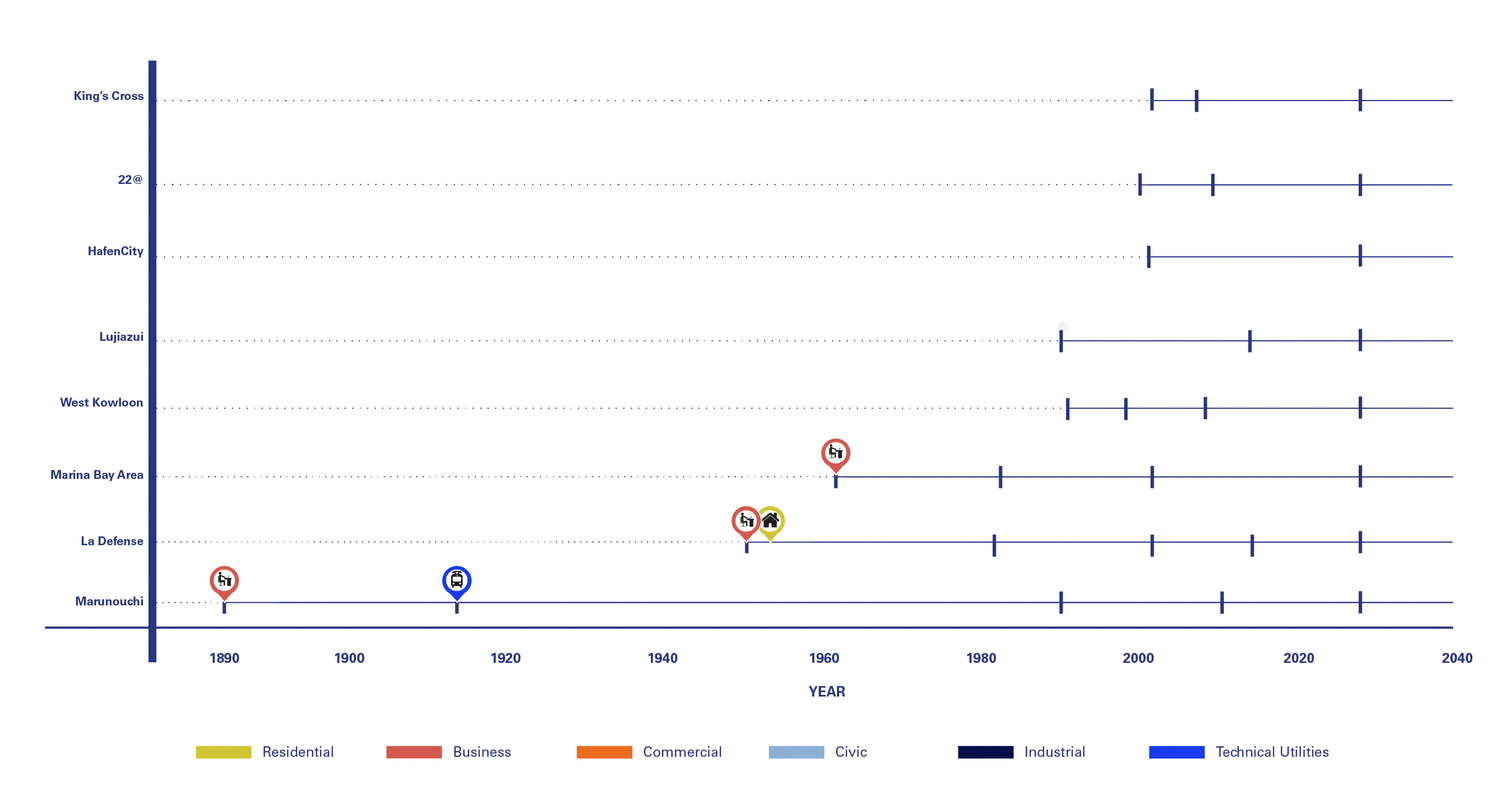2_GRAND PROJETS ARE DEVELOPING MORE DIVERSE PROGRAMMES

Over the last three decades, Grands Projets have become increasingly diversified in the mix of uses they host. We found that whilst earlier projects—Marunouchi in Tokyo or La Défense in Paris—prioritised mono-functional, business-oriented uses, many contemporary Grands Projets include a range of activities at their inception, such as retail, cultural, educational and entertainment facilities. Recently conceived projects like 22@, West Kowloon and King’s Cross have promoted themselves as mixed-use districts with a focus on knowledge economy, culture and/or education from the start. In addition, initially mono-functional business centres, such as Marunouchi, La Défense and Canary Wharf in London, have diversified their programmes in order to improve the urban quality of their areas by providing more commercial, leisure and/or residential uses.
Grands Projets’ diversification of programmes reinforces their economic strength and significance as components of internationally connected, competing centralities, supporting the evolution of cities’ global images. Increasingly diverse uses equip Grands Projets with the capacity to respond to specific trends or urban aspirations, such as the pursuit of creative and culturally-driven centres in West Kowloon (Hong Kong) and Marina Bay Area (Singapore).
Grands Projets have become drivers of urban transformation within cities’ development trajectories, economic conditions and functional foci. Grands Projets can serve as catalysts for the regeneration of adjacent areas, redefinition of regional urban dynamics and repositioning of cities on a global scale. Growing programme diversification has also increased the capacity of these projects to interact with the spaces and activities of their adjacent neighbourhoods. Nonetheless, Grands Projets’ ability to attract programmes of relevance to public life—shopping, community and cultural uses and administrative functions—risks the creation of increasingly self-sufficient projects. These projects, less dependent on their surroundings, enable users and residents to satisfy their needs without exiting the site’s perimeter. The degree of programme complementarity to surrounding regions and other centralities, as well as a programme’s capacity to cater to a variety of users, are key elements that determine a Grand Projet’s inclusiveness.
Reference
Any reference to or use of the content present on this page has to be cited as follow: Gasco, Anna, and Naomi C. Hanakata. 2019. ‘The Potential of Grands Projets for Inclusive and Adaptable Future Cities’. In The Grand Projet: Understanding the Making and Impact of Urban Megaprojects, edited by Kees Christiaanse, Anna Gasco, and Naomi C. Hanakata, 603–612. nai 010 Publishers.